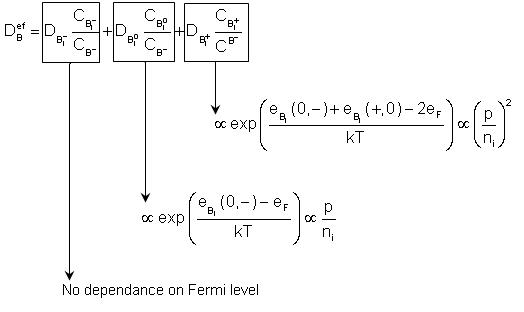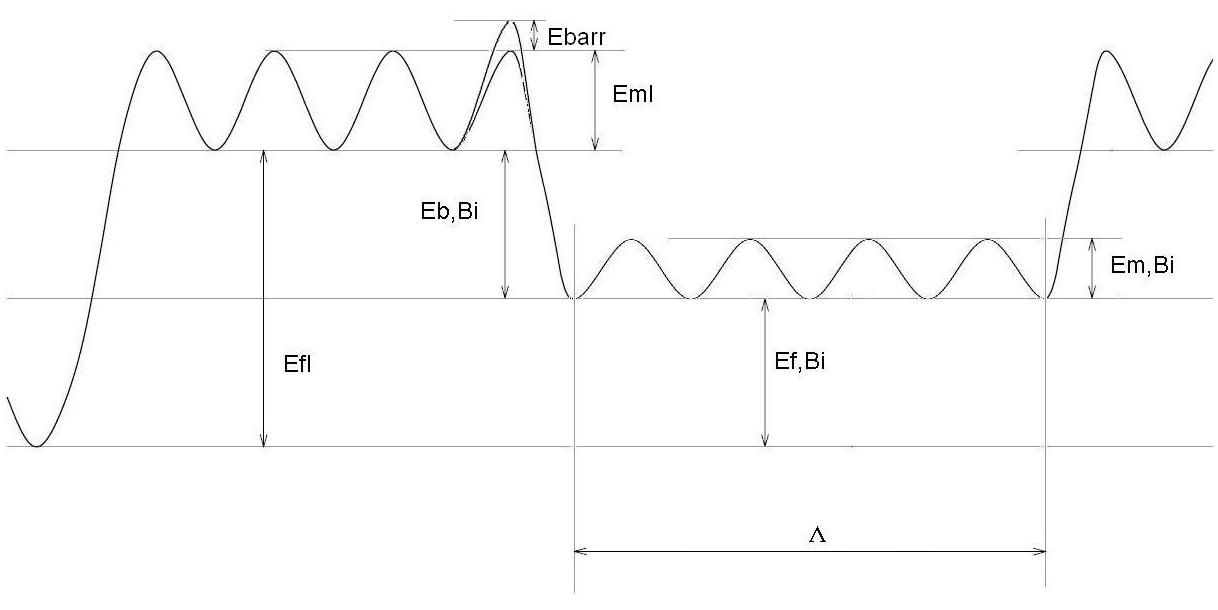For single impurities non assisted by interstitials or vacancies (e.g. F, H,...):

Where:
For I or V, the relevant magnitude is the DC product. Thus, the effective diffusivity of I or V can be defined as (Fahey et al. 1989):

Where:
Thus:

The activation energy of Deff* is:
Edif = Ef + Em
Where:
The diffusivity of silicon in silicon (self-diffusion) is given by (Bratch et al. 1998):
![]()
Where fx is taken to be 0.72 for interstitials and 0.5 for vacancies.
For immobile impurities, diffusivity through mobile pairs, AX:
![]()
Let's use the boron (negative ion is substitutional positions).

Where:
The proportionalities to p/ni and (p/ni)2 are valid only within the Maxwell-Boltmann approximation (non-degenerated material).
The activation energies of the terms in the previous equation (diffusion energies, Edif) are represented in the figure below. The diffusion energy value for boron under intrinsic conditions in the figure below (Edifint) will be similar to the activation energy of the Arrhenius plot of equilibrium boron diffusivity in intrinsic condition. In the figure, it can be seen that Bi0 is a metastable state but is the main contributor for boron diffusion in a wide range of Fermi levels. All the three terms of the equation are proportional to:

Note that DICI is the DC product of neutral interstitials. Thus, boron diffusion does not depend on the charge states of I, but on those of Bi.
See Fahey et al. 1989 and Martin-Bragado et al. 2005.
In the figure below, we can see that, after Bi formation, this point defect migrates through the material an average distance, Λ (long-hop distance) until it breaks up.

The long-hop distance can be expressed as:

The energy associated to this process can be calculated as follows:

This energy is negative.